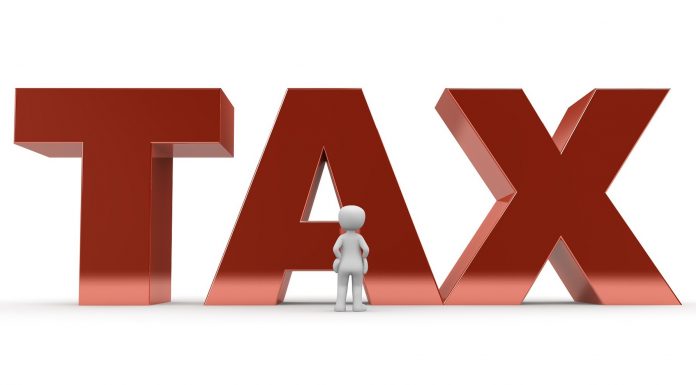(Future of Freedom Foundation) And then there were three.
The remaining three candidates are Joe Biden, Tulsi Gabbard, and Bernie Sanders.
Although the Democratic candidates attacked each other mercilessly during their debates, there is one thing they all have in common that sets them apart from their Republican opponent, Donald Trump: all of them want to raise taxes.
The current incarnation of the tax code is the result of the Tax Cuts and Jobs Act (TCJA) signed into law by President Trump on December 22, 2017, and taking effect beginning in tax year 2018. The TCJA, or Trump tax cut, kept the same number of tax brackets (seven), but changed them to 10, 12, 22, 24, 32, 35, and 37 percent. For tax year 2020, the top rate kicks in once a person makes $518,400 or more, or in the case of a married couple filing jointly, $622,050 or more. The standard deduction is $12,400 (single) or $24,800 (married). The TCJA eliminated personal exemptions, although there is now a $500 credit for each non-child. The Child Tax Credit is worth a maximum of $2,000 per qualifying child. The tax rates on long-term capital gains are 15 percent on income exceeding $40,000 (single) or $80,000 (married) and 20 percent on income exceeding $441,450 (single) or $496,600 (married). The estate tax rate is 40 percent, but only on estates valued more than $11.58 million (single) or $23.16 million (married). The Net Investment Income Tax (NIIT) taxes investment income at a rate of 3.8 percent on investment income exceeding $200,000 (single) or $250,000 (married). The TCJA lowered the corporate income tax rate from 35 percent to a flat 21 percent.
In addition to income taxes, there are two payroll taxes. The Social Security tax rate is 12.4 percent (split between employers and employees) on the first $137,700 of wages. The Medicare tax rate is 2.9 percent (split between employers and employees) on wages of any amount. The employee share increases to 2.35 percent on that portion of income that is exceeds $200,000 (single) or $250,000 (married filing jointly).
To sell their planned tax increases to the voters, all of the Democratic candidates have proposed raising taxes on corporations and “the rich.”
“The rich” already pay the vast majority of the income taxes. According to the latest figures released by the Internal Revenue Service (IRS),
- In 2017, the top 50 percent of all taxpayers paid 97 percent of all individual income taxes, while the bottom 50 percent paid the remaining 3 percent.
- The top 1 percent paid a greater share of individual income taxes (38.5 percent) than the bottom 90 percent combined (29.9 percent).
- The top 1 percent of taxpayers paid a 26.8 percent average individual income tax rate, which is more than six times as high as what taxpayers in the bottom 50 percent (4.0 percent) paid.
“The rich” are also punished through the phase-out of tax exemptions, deductions, and credits as their income rises. And not only do “the poor” pay little or nothing in income tax, they receive tax refunds from the government of money they never paid in, in the form of refundable tax credits.
Another problem with increasing taxes on “the rich” is that there are just not enough of them to satisfy the federal leviathan. If one looks at the total adjusted gross income from every tax return with an adjusted gross income of more than $1 million and then at how much the federal government spends in a year, it is evident that even if the federal government confiscated 100 percent of the earnings of every American who makes more than $1 million a year, it wouldn’t run the government for even five months.



